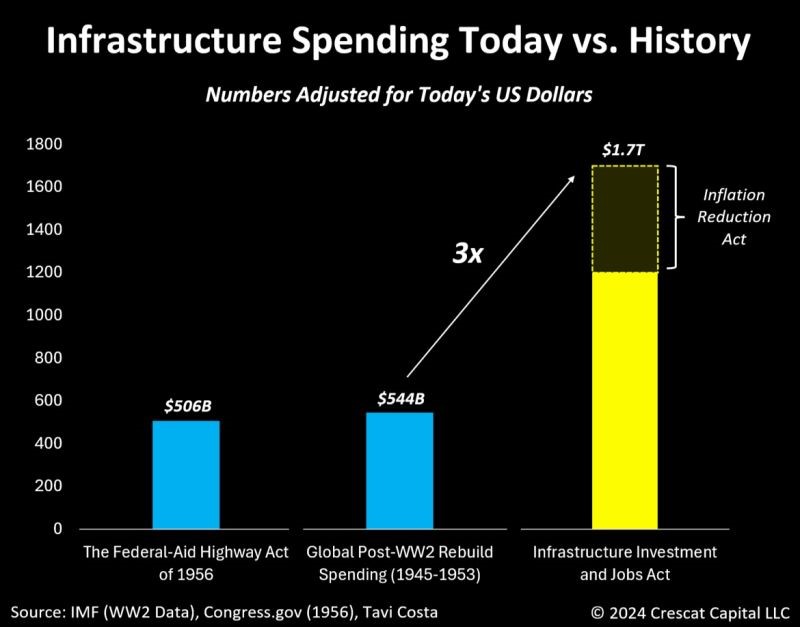How much will current infrastructure spending increase?
Today’s infrastructure spending is likely to be significantly higher than that experienced during the post-World War II reconstruction period by the US and the rest of the world.
Excessive debt levels often provoke escalating geopolitical tensions and conflicts, and as disagreements between nations intensify, there is a greater requirement for countries to strengthen their self-reliance in domestic operations.
These circumstances are poised to catalyze what could develop into one of the most ambitious infrastructure initiatives in history, with the potential to be highly inflationary.
The last major infrastructure investment in the United States occurred in 1956 with the National Interstate and Defense Highway Act under President Dwight D. Eisenhower. Originally budgeted at $25 billion, equivalent to about $207 billion in today’s currency.
This initiative pales in comparison to the recent Infrastructure Investment and Jobs Act, which authorizes government spending nearly six times as much, totaling $1.2 trillion.
In this chart, Crescat Capital also took into account the Inflation Reduction Act passed in 2022, and expected a significant portion of these funds to be directed to new infrastructure projects, including those associated with the Green Revolution and other initiatives.
 Source: Tavi Costa
Source: Tavi Costa
About the Viking
With Viking’s signals, you have a good chance of finding the winners and selling in time. There are many securities. With Viking’s autopilots or tables, you can sort out the most interesting ETFs, stocks, options, warrants, funds, and so on. Vikingen is one of Sweden’s oldest equity research programs.
Click here to see what Vikingen offers: Detailed comparison – Stock market program for those who want to get even richer (vikingen.se)













